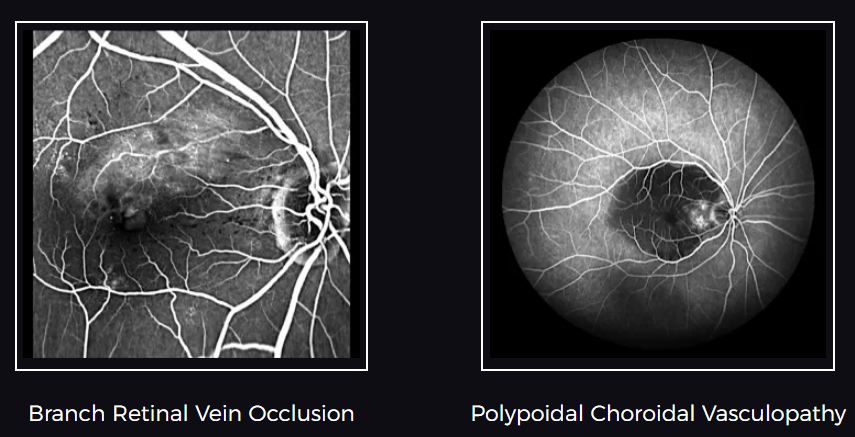Mydriatic or Non Mydriatic Fundus Camera, Which Is Better?
Doctors usually examine the fundus using specialized instruments to accurately diagnose and treat eye diseases based on the symptoms shown in the photos taken by these instruments. One such instrument is a fundus camera, a type of retinal camera that allows ophthalmologists to view the retina in greater detail and store the results for further research and comparison. More importantly, both doctors and patients can view clearer images, facilitating more in-depth disease analysis and further treatment.
Fundus photography involves taking continuous photographs of the eye through the pupil. In ophthalmic medicine, fundus cameras can be categorized into non-mydriatic and mydriatic fundus cameras. Which is better for ophthalmologists? The rest of the article will focus on this question.
What is a non-mydriatic fundus camera?
Under intense light, the pupil shrinks, making it difficult for a traditional fundus camera to capture a clear and comprehensive picture of the fundus. Therefore, ophthalmologists typically ask patients to use eye drops before taking photos with mydriatic fundus cameras to dilate the pupil. This provides a clearer view of the inner surface of the eye for examination.
The use of a non-mydriatic fundus camera means that high-definition pictures of optic disc, retina, and lens can also be achieved by the particular low power microscope of the instrument without increasing the size of the pupil.
Why should ophthalmologists choose a non-mydriatic fundus camera?
Compared to the mydriatic fundus camera, one of the most significant advantages of the non-mydriatic fundus camera is its ability to capture larger and clearer pictures without the need for pupil dilation. This revolutionary upgrade is patient-friendly, eliminating the 30-minute waiting time for pupil dilation and the eye adjustment time after blinking. It also helps ophthalmologists improve the efficiency of diagnosis.
Today's non-mydriatic fundus camera is an easy-to-use device that captures detailed images, maintaining eye health and aiding in the early diagnosis of eye problems. Fundus photography, utilizing the reflective properties of the retina, excels at capturing subtle details of various severe eye conditions, such as macular degeneration, glaucoma, hypertension, multiple sclerosis, and diabetic retinopathy.
Explore more:How to Select Disposable Medical Tools?
Discover the Wonderful Benefits of Orthopedic Vacuum Pumps
Exploring Weight-Bearing Self-Locking Pneumatic Knee Joints
Removing Staple Sutures: Manual Vs. Electronic Techniques Explained
What Are Absorbable Ligating Clips and Their Benefits?
What Benefits Do Carbon Fiber Ankle Supports Offer Users?
Key Considerations for Purchasing Staple Gun Medical Devices
A mydriatic fundus camera is neither superior to a non-mydriatic fundus camera in terms of image completeness and clarity nor in capturing wide-angle and three-dimensional images. Therefore, to establish trust and authority with patients, ophthalmologists are more inclined to choose a non-mydriatic fundus camera as their best assistant for comprehensive fundus assessment.
What are the applications of non-mydriatic fundus photography?
Medical Education
Fundus examination is crucial for the comprehensive evaluation of various nervous system diseases. Medical academic research centers can greatly benefit from non-mydriatic fundus cameras, as a single photo makes it easier to assess and share challenging cases with other clinicians or train the next generation of healthcare professionals. This is particularly valuable for large healthcare providers.
Telemedicine
The advancement of information technology enables ophthalmologists to conduct remote consultations, including the interpretation of fundus photography. By sharing photos taken by the non-mydriatic fundus camera in the cloud, ophthalmologists from different locations can quickly interpret the images and make triage decisions simultaneously.
Optic Disc Edema
Sometimes, it is difficult for doctors to observe optic disc edema directly using ordinary instruments, but a non-mydriatic fundus camera may help. Although non-mydriatic fundus photography may not definitively determine whether a patient has optic disc edema, it can help identify other fundus signs of optic disc edema, such as blurred optic disc edges, optic nerve cup filling, folds around the nipple, optic nerve nipple congestion, and venous congestion.
Final Thought
The images obtained by a non-mydriatic fundus camera can detect eye diseases in their early stages, enabling prompt preventive treatment. Additionally, these images provide ophthalmologists with valuable information about the progression of eye diseases and support the advancement of telemedicine. There are no reasons not to equip your medical institution with a fundus camera.
Surgical Reamer vs. Traditional Tools: Which is More Effective?
Surgical Flush Suction Pipes: Best Practices for 2024
Top Waterproof and Non-Slip Sach Foot Options for Ultimate Comfort
How Can Orthotic Cutting Strips Alleviate Your Foot Pain Effectively?
How Can We Ensure Safety and Quality in Plastic Core Adapters?


Comments
0